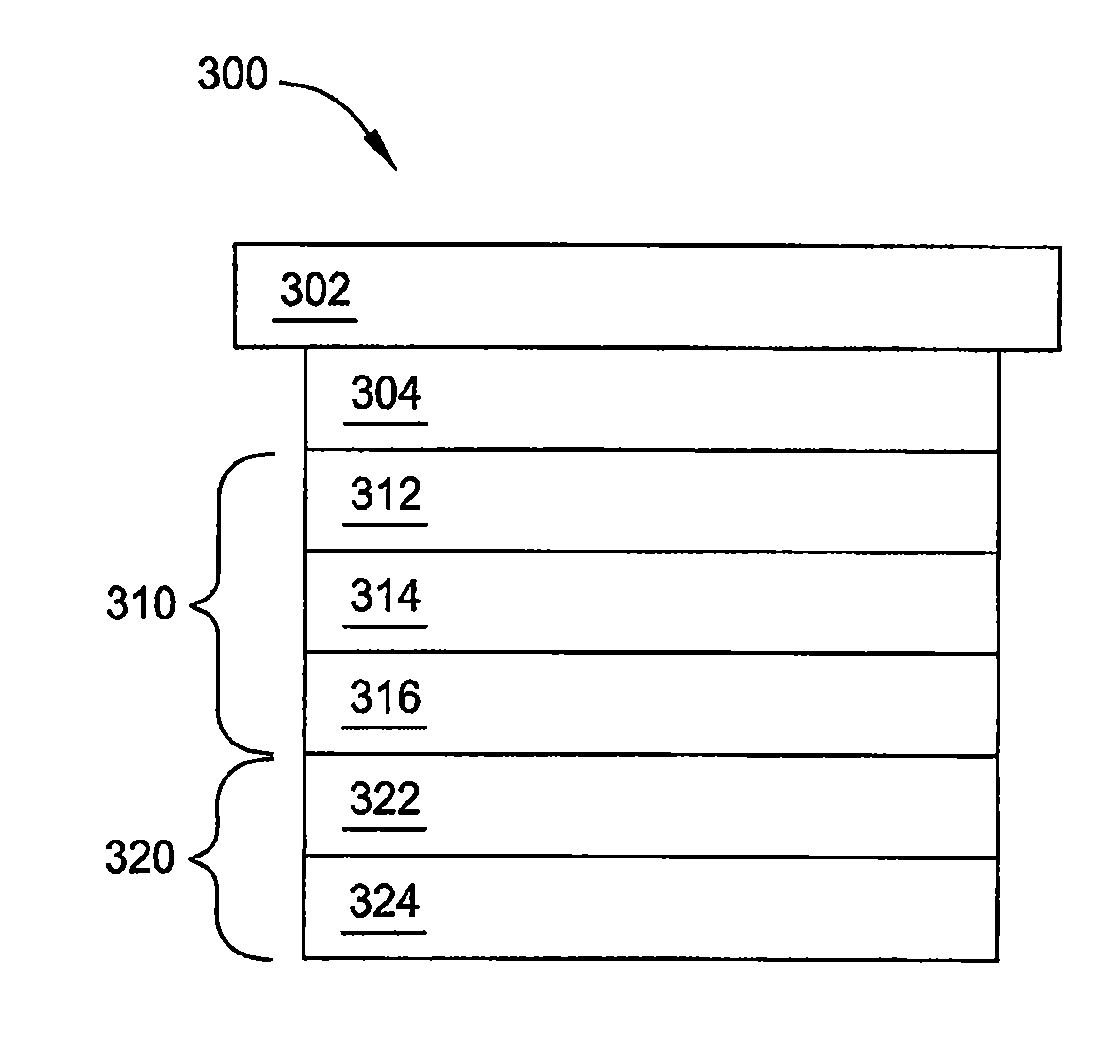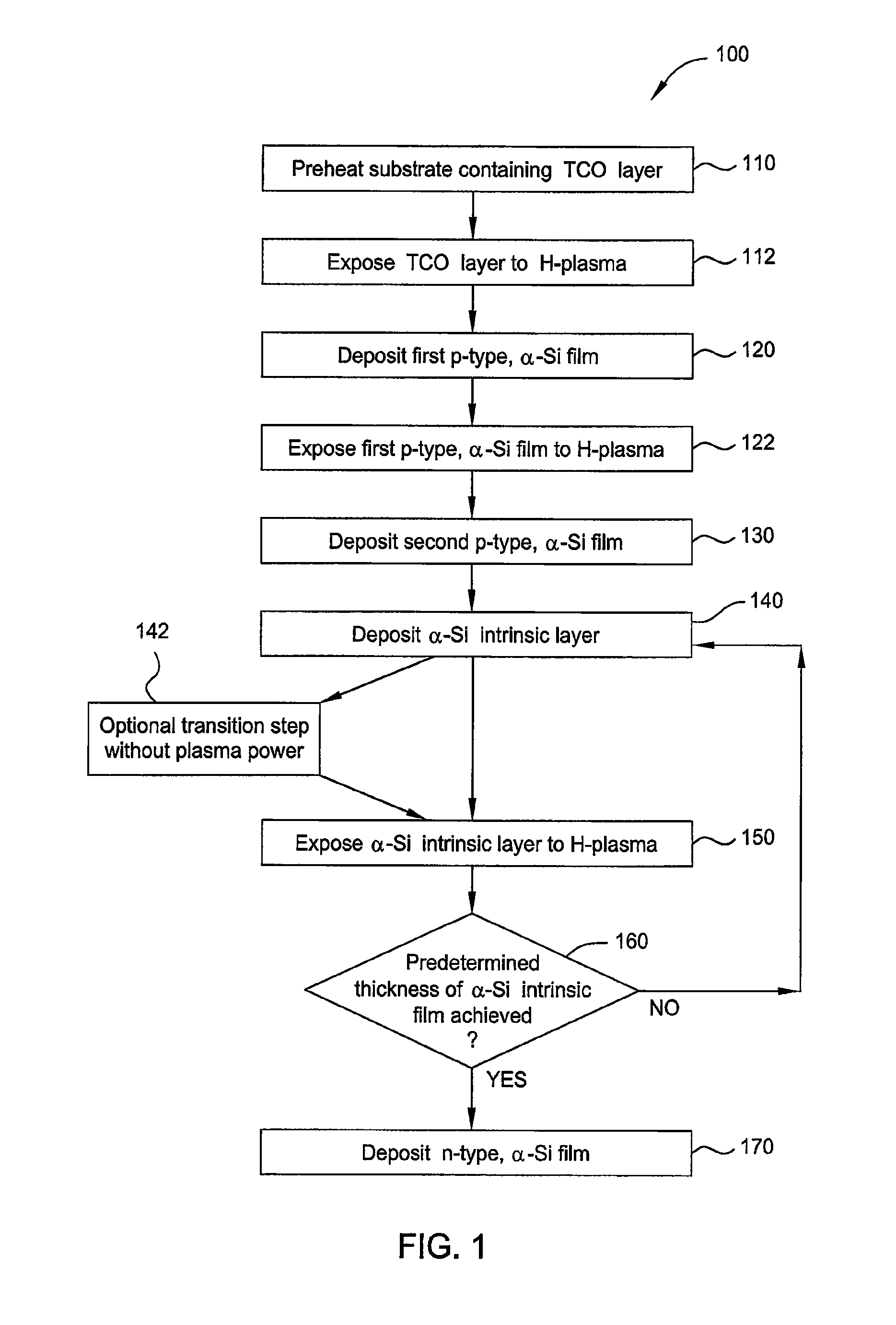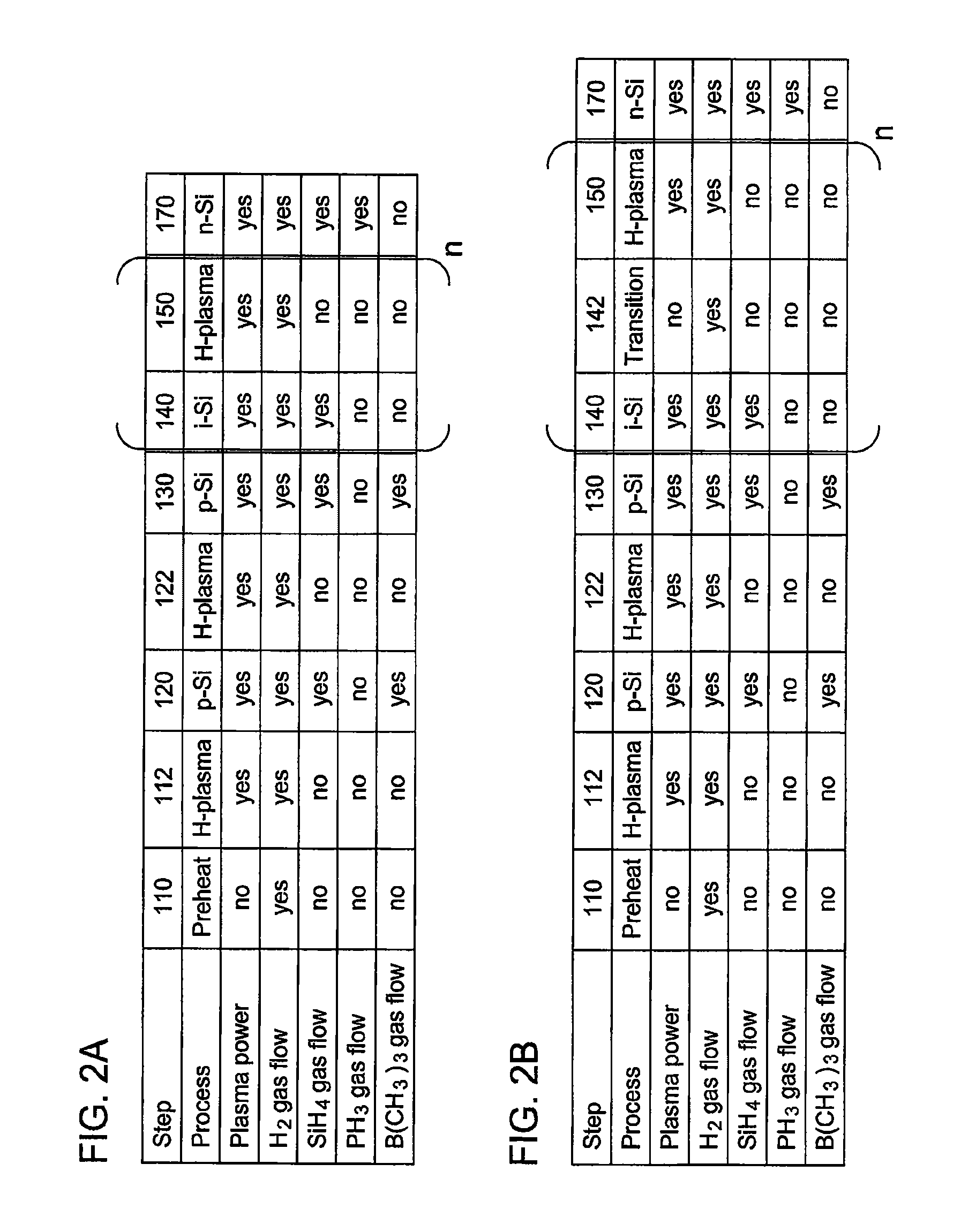In-situ hydrogen plasma treatment of amorphous silicon intrinsic layers
- Summary
- Abstract
- Description
- Claims
- Application Information
AI Technical Summary
Benefits of technology
Problems solved by technology
Method used
Image
Examples
Embodiment Construction
[0026]Embodiments of the invention generally provide methods for forming amorphous silicon-based photovoltaic (PV) devices, such as solar or PV cells, by utilizing deposition steps and plasma treatment steps during a plasma-enhanced chemical vapor deposition (PE-CVD) process.
[0027]FIG. 1 shows a flow chart depicting process 100, which is utilized to form solar or PV devices or cells containing at least one amorphous silicon (α-Si) p-i-n junction, as described by embodiments herein. In one embodiment, process 100 includes the steps of preheating a substrate having a transparent conductive oxide (TCO) layer disposed thereon at step 110, exposing the TCO layer on the substrate to a hydrogen plasma at step 112, depositing or forming a first p-type, amorphous silicon (α-Si) film on or over the TCO layer at step 120, exposing the first p-type, α-Si film to the hydrogen plasma at step 122, and depositing a second p-type α-Si film on or over the first p-type, α-Si film at step 130.
[0028]Pro...
PUM
 Login to View More
Login to View More Abstract
Description
Claims
Application Information
 Login to View More
Login to View More - R&D
- Intellectual Property
- Life Sciences
- Materials
- Tech Scout
- Unparalleled Data Quality
- Higher Quality Content
- 60% Fewer Hallucinations
Browse by: Latest US Patents, China's latest patents, Technical Efficacy Thesaurus, Application Domain, Technology Topic, Popular Technical Reports.
© 2025 PatSnap. All rights reserved.Legal|Privacy policy|Modern Slavery Act Transparency Statement|Sitemap|About US| Contact US: help@patsnap.com



